Colonial architecture in Surabaya
Colonial architecture in Surabaya (Dutch: Soerabaja) includes the legacy of neoclassical architecture and Dutch architecture built during the Dutch East Indies era. The old city in Surabaya is a tourist attraction but faces problems with the deterioration of older buildings. It includes Dutch architecture, has an Arab quarter and areas exhibiting Chinese influence.[1] Jembatan Merah is an area known for its Dutch architecture.[1]

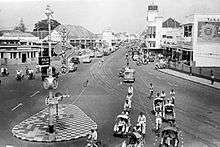
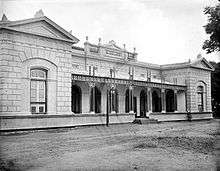
Cosman Citroen designed a city hall in 1916 and planned the area of Ketabang. Museum Bank Indonesia, Surabaya is located in the former De Javasche Bank building. The House of Sampoerna i s a museum devoted to the history of clove cigarette (kretek) manufacturing in Indonesia and is housed in a Dutch colonial building (originally an orphanage) dating to 1864.[1][2]
Gallery
 Bijeenkomsthuis (meeting house)
Bijeenkomsthuis (meeting house) Entrance portal of "De ingangspoort" (Perseverance), Royal Factory Steam and other machines in the year 1857 by F.J.H. Baijer
Entrance portal of "De ingangspoort" (Perseverance), Royal Factory Steam and other machines in the year 1857 by F.J.H. Baijer Harbor office in Surabaya and memorial on the occasion of the visit of Governor General Fock (September, 1922)
Harbor office in Surabaya and memorial on the occasion of the visit of Governor General Fock (September, 1922) City garden (late 19th century)
City garden (late 19th century) Garden in Surabaya
Garden in Surabaya "Komediegebouw" Surabaya
"Komediegebouw" Surabaya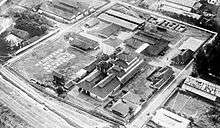 Heineken Brewery in Surabaya
Heineken Brewery in Surabaya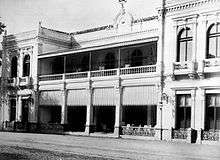 Sociëteit Concordia (Concordia Society)
Sociëteit Concordia (Concordia Society)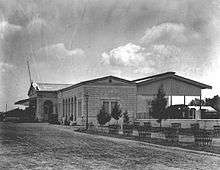 Goebang train station (Surabaya Gubeng railway station)
Goebang train station (Surabaya Gubeng railway station) Post and Telegraph office
Post and Telegraph office Resident's house in Surabaya
Resident's house in Surabaya Pasar Besar in the background
Pasar Besar in the background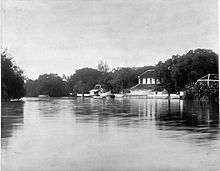
 Grimm & Co. "cake palace" at Pasar Besar
Grimm & Co. "cake palace" at Pasar Besar Goebang (now Gubeng district)
Goebang (now Gubeng district)
 Postcard of sluice
Postcard of sluice Fountain and water carriers
Fountain and water carriers Governor General Fock visiting a school
Governor General Fock visiting a school Hotel Embong Malang
Hotel Embong Malang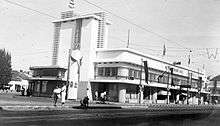 Piccolo Club Toendjoengan (signage on building says Hetwenkwe (sp?) Huis (1938)
Piccolo Club Toendjoengan (signage on building says Hetwenkwe (sp?) Huis (1938) Kurkdjian photo studio (O. Kurkdjian & Co.)
Kurkdjian photo studio (O. Kurkdjian & Co.) International trade office in Willemsplein
International trade office in Willemsplein
See also
- Colonial architecture of Indonesia
- Colonial architecture of Jakarta
References
- Lonely Planet Indonesia Ryan Ver Berkmoes, Celeste Brash, Muhammad Cohen, Mark Elliott, Guyan Mitra, John Noble, Adam Skolnick, Iain Stewart, and Steve Waters Lonely Planet, Sep 1, 2010
- "House of Sampoerna website".
Further reading
- The heritage and impact of Dutch architecture and civil engineering in Surabaya and Malang Petra University Surabaya 2003